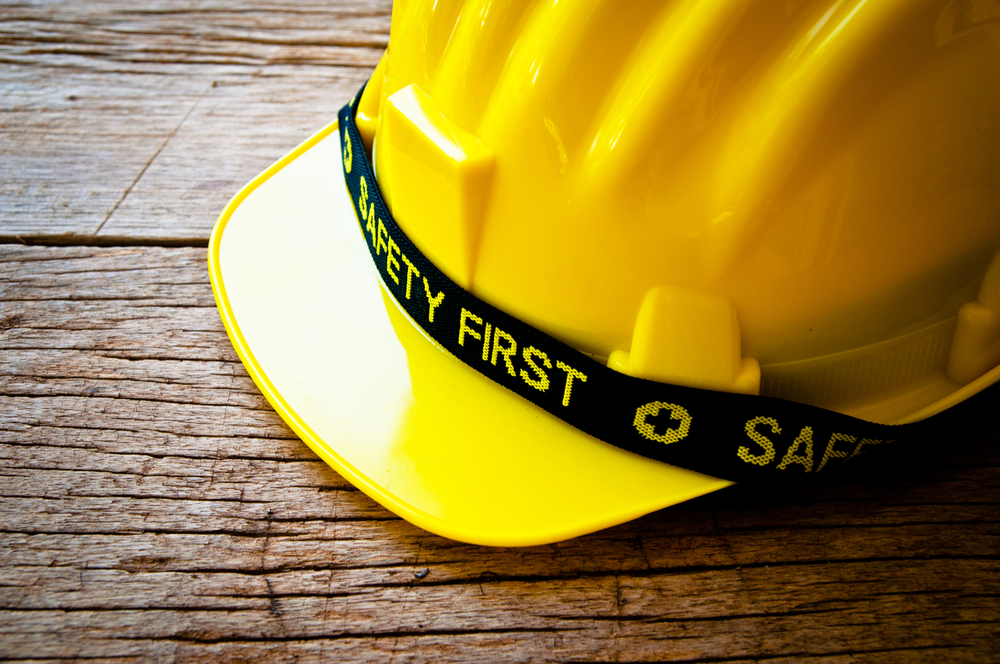News Post
July 2016 Newslettter
HGV drivers warned after road worker crushed by runaway vehicle
HGV drivers are being warned to follow basic safety procedures when coupling and uncoupling vehicles following the death of a 20-year-old road worker.
HSE leaders are urging drivers to apply parking brakes and use (or retrofit) warning alarms to avoid a repeat of a fatal incident in January 2015.
Road worker Dale Pentney was crushed by an HGV tractor unit which unexpectedly rolled backwards as driver Anthony Steven Smith was in the process delivering materials for repairs to the A21 in Kent.
At Sevenoaks Magistrates’ Court, Smith was given a suspended prison sentence.
He pleaded guilty to causing death by careless driving and a breach of section 7 of the Health and Safety at Work Act.
The court heard Smith, 48, of Porthcawl, Newport, Wales, was an experienced HGV driver and was in the process of connecting his tractor unit to another parked trailer when it rolled backwards.
Two men working with Pentney were able to jump out of its way but Pentney was unable to do so and was trapped between the two vehicles. He sustained major head injuries and died at the scene.
A joint investigation by Kent Police and HSE found that Smith failed to apply the parking brake of the tractor unit before he left it. He also failed to follow recognised industry coupling procedures.
Smith was sentenced to 12 weeks’ imprisonment (suspended for 12 months) and disqualified from driving for 12 months.
HSE inspector Melvyn Stancliffe, speaking after the hearing brought by the Crown Prosecution Service (CPS), said: “This was a tragic and wholly avoidable accident and HSE’s sympathies are extended to the Pentney family.
“Sadly, it shows how dangerous situations can develop very quickly. These coupling / uncoupling incidents – known as ‘runaways’ or ‘rollaways’ – are all too common.
“Many vehicles are fitted with visual and audible parking brake warning alarms, and if they are not fitted, hauliers should consider retrofitting them to their tractor units as HSE considers it reasonably practicable to do so.
“These alarms must never be ignored. Drivers must ensure they correctly apply the tractor unit parking brake before exiting the cab and then follow safe decoupling and coupling procedures.”
Nigel Pilkington, head of CPS South East complex casework unit, said: “Although Dale died whilst he was at work, it was important to charge Anthony Smith with the serious offence of causing Dale’s death by careless driving.
“The sentence rightly reflects the fact of his careless driving on that day.”
HSENI prosecutes egg producer following injury
A company from Northern Ireland has been fined £7,500 for health and safety failings that led to the serious injury of an employee.
Ready Egg Products Ltd was fined at Omagh Crown Court after a Health and Safety Executive for Northern Ireland (HSENI) investigation into the incident at the Ready Egg premises, Lisnaskea, on 21 August 2014.
The court heard how a 56-year-old employee was injured when his hand was pulled into an unguarded conveyor roller while he carried out routine machinery maintenance. Sadly, as a result of his injuries, and after a number of operations, the employee lost all the fingers of his right hand.
The machine, a manure dryer common in egg production plants, had been supplied in 2012 without the appropriate guarding but was being used in the production process in this dangerous condition. At no time did the company recognise the need to guard the conveyor thereby exposing employees to significant risk of injury for some time.
Speaking after sentencing, Jonathan Close, an inspector with HSENI’s Major Investigation Team said: “While not specific to the egg processing industry, the risks from entanglement in machinery rollers are well known. Employers must make sure that all machinery is properly guarded and that employees are trained, competent and authorised to operate machinery.”
Talk About Cases:
£200k fine following HAVS cases
A pipe manufacturing company based in Newport has been fined for safety failings after seven reported cases of Hand Arm Vibration Syndrome (HAVS) or Carpal Tunnel Syndrome (CTS) between April 2014 and July 2015.
Newport Crown Court heard that employees of Asset International Limited used vibrating tools without proper training or practical controls to reduce vibration risk.
An investigation by the Health and Safety Executive (HSE) found no sufficient risk assessment or health surveillance had been carried out.
Asset International Limited, of Stevenson Street, Newport, was fined a total of £200,000 and ordered to pay costs of £27,724 after pleading guilty to offences under Regulations 5,6,7, and 8 of the Control of Vibration at Work Regulations 2005.
The HSE inspector said after the hearing: “The serious and irreversible risks from Hand Arm Vibration Syndrome caused by work with vibrating tools are well known and guidance has been in place since the early 1990s. This case shows there is no excuse for not putting in place a management system which includes risk assessment, control measures, health surveillance and information and training to reduce these risks to as low a level as is reasonably practicable.”
Royal Mail fined after worker injured in warehouse
The Royal Mail Group Limited has been fined £50,000 after a worker’s foot was run over by a fork-lift reach truck in a bundling warehouse.
Medway Magistrates Court heard how an incident happened at the Royal Mail Group Limited (RMG) bundling centre in Rochester where a worker stepped out into an aisle and another worker, who was driving a fork-lift reach truck, ran over his foot causing broken bones and bruising.
The injured worked was not wearing safety boots with steel toe caps when the incident happened.
An investigation by the Health and Safety Executive (HSE) into the incident which occurred on 7 March 2014 found that workplace transport was not organised to ensure pedestrians and vehicles can circulate safely as they both operated in the same areas without segregation.
Better organisation of the workplace transport within the warehouse would have prevented this incident from happening.
Royal Mail Group Limited, of Victoria Embankment, London, pleaded guilty to breaching Regulations 17(1) of the Workplace (Health, Safety and Welfare) Regulations 1992, and Regulation 3(1) of the Management of Health and Safety at Work Regulations 1999, and was fined £50,000 and ordered to pay costs of £10,406.
Fine after woman injured at crystal manufacturer
A Cumbrian lead crystal manufacturer has been fined after an employee suffered a serious hand injury while using machinery. The HSE said that the incident could have been avoided had the company followed industry guidance.
Laura Ponsford, who was 21 at the time of the incident in February last year, had the middle finger of her right hand torn off while operating a drill to widen the neck of a glass bottle.
Preston Crown Court heard the investigation by the Health and Safety Executive (HSE) into the incident at Greatdale Ltd (trading as Cumbria Crystal) found the firm had failed to prevent operatives from accessing dangerous parts of machinery.
Mrs Ponsford had only been working at the defendant’s premises at The Lakes Glass Centre, Ulverston, for one year and has since left the company.
The court heard on the afternoon of 20 February 2015, she was using a ‘pillar drill’ to widen (or ream) the neck of a glass bottle. The chuck and reamer were unguarded. Mrs Ponsford was wearing latex gloves while performing this task, however the glove on her right hand became entangled within the rotating parts of the reamer resulting in the middle finger of her hand being severed.
She underwent 10 hours of surgery to reattach the finger but unfortunately she was later told the operation had not been successful and had to undergo a further operation in March 2015 to have the finger surgically amputated to below the second knuckle.
HSE told the court the incident could have been prevented if a suitable and sufficient risk assessment had taken place with regard to the drill and practicable control measures to prevent access to dangerous parts of machinery had been in place.
Greatdale Limited (trading as Cumbria Crystal) of The Lakes Glass Centre, Oubas Hill, Ulverston, Cumbria, pleaded guilty to breaching Regulation 11(1) of the Provision and Use of Work Equipment Regulations 1998 and was fined £15,000.
After the hearing the HSE inspector said: “This incident could have been prevented simply by providing guarding to prevent access to dangerous parts of the machine.
“The need to guard dangerous parts of machinery is well known with established industry guidance available, and in this case, the result of that guidance being ignored is a serious injury to a young woman.”
BT engineers’ ladder falls may have followed electric shocks
British Telecommunications (BT) must pay £660,000 after two of its employees were seriously injured in falls from height.
Teesside Crown Court heard how the two BT Openreach engineers were working at the company’s Darlington Automatic Telephone Exchange.
One of the engineers was installing a cable in a ceiling level cable tray to the main distribution frame – which connects equipment to cables – on the ground floor.
The engineer was standing on a stepladder reaching up to the cable tray which ran beside the lighting system. He fell off the ladder and was taken to hospital with serious head and back injuries.
BT did not properly investigate the accident and later the same day the cable installation resumed. The second engineer stood on another ladder and also fell off, sustaining skull and back injuries. He was blinded in one eye and has long-term memory problems.
The Health and Safety Executive (HSE) investigated both incidents, which occurred on 1 April 2010, and found that the work was not properly assessed or planned, despite workers being exposed to such risks as working at height close to an electrical system.
Serious failings were also found in the electrical lighting system where the workers were exposed to live components, some at 240 volts. The system was poorly constructed and had not been properly maintained or tested. It is likely the engineers received electric shocks which threw them from the ladders.
BT was fined £600,000 after pleading guilty to breaching Section 2(1) of the Health and Safety at Work Act. It was fined £600,000 and ordered to pay costs of £60,000.
The HSE inspector said after the hearing: “These life changing incidents could have been avoided if BT had provided safe systems of work and ensured that the electrical systems were properly constructed, maintained and tested.”
Worker injured with powered bowl mixer
A Wiltshire bakery has been fined for safety failings after a worker was injured with a powered bowl mixer.
Swindon Magistrates’ Court heard how an employee of Haydens Bakery who manufacture confectionary items, caught his wedding ring on an unguarded attachment of the rotating shaft on a powered bowl mixer. He suffered injuries to his ring finger which required partial amputation.
An investigation by the Health and Safety Executive (HSE) into the incident which occurred on 3 March 2015 found that the company had modified the machine by adding a securing clip to a rotating shaft but failed to identify and address the additional risk created.
Haydens Bakery, of Hopton Estate, London Road, Devizes, Wiltshire, pleaded guilty to breaching Regulation 11(1) of the Provision and Use of Work Equipment Regulations 1998 and Regulation 3(3) of the Management of Health and Safety at Work Regulations 1999 and was fined £40,000 with £5,950 costs.
A statement from the company said: “Haydens Bakeries Ltd (“Haydens”) confirms that it pleaded guilty to a breach of PUWER regulations following an accident at its bakery in Devizes in March 2015 and has been fined £40 000.
“The incident was caused when a Haydens employee had a ring caught in the machine he was operating. The resultant injury led to significant damage to one of his fingers and unfortunately the finger was subsequently amputated.
“Haydens regrets the injury caused and supported the employee during his absence from work and recovery period. We are pleased that he was able to return to work.
“Haydens prioritises the safety and welfare of all its employees and prior to this incident has had an excellent health and safety record.”
Exploding tyre fatality results in £1 million fine
A tyre company in Kent has been sentenced for safety failings after a young workers was killed when a tyre exploded.
Matthew Hoare, 21, was repairing a puncture to the tyre of a ‘dresser loading shovel’ when it exploded, Canterbury Crown Court heard.
An HSE investigation into the incident found that Matthew, who was employed by Watling Tyre Service Limited of Kent, was working on his own with inadequate work equipment that was not properly maintained.
The investigation found that he was not trained or competent to undertake the work he was told to complete.
The principal inspector for the HSE, said: “Employees need to be provided with properly maintained equipment and the correct equipment to undertake tasks while out on site.
“Employees also need to be trained and competent in the tasks they were asked to undertake.”
Watling Tyre Service Limited pleaded guilty at a previous hearing on 29 January 2016, to breaching Section 2(1) and 3(1) of the Health and Safety at Work etc Act 1974.
On 1 June, they were fined £1 million and ordered to pay costs of £99,485.
On Face Fit testing for a limited time only!
Call now for more information!
Tel: 01937 836111
Useful Information:
Fire Safety Reminder – Smoke Alarms
Source: Humberside Fire & Rescue Services 
You are more than twice as likely to die in a fire at home if you haven’t got a working smoke alarm. A smoke alarm is the easiest way to alert you to the danger of fire, giving you time to escape. They are cheap, easy to get hold of and easy to fit.
How many smoke alarms do you need?
The more alarms you have, the safer you’ll be – as long as they are working – so make sure you test them weekly. Fit a smoke alarm on each level of your home – it’s the simplest step you can take to cut the risk of dying as a result of a fire in your home. You should have a minimum of one alarm on each floor. However, if you have only one alarm and two floors, put it somewhere you’ll be able to hear it when you’re asleep. If you have a large electrical appliance, like a computer, in any of the bedrooms, you should fit a smoke alarm there too. You should also make sure you test it weekly.
Installing your smoke alarm
The best place for your smoke alarm is on the ceiling, near or at the middle of the room or hall. The alarm should be at least 30cm (one foot) away from a wall or light. If it is difficult for you to fit your smoke alarm yourself, ask a family member or friend to help you. It usually takes a few minutes to install your smoke alarm yourself – just follow the manufacturer’s instructions that come with it.
Maintaining your smoke alarm
To keep your smoke alarm in good working order, you should:
- Test it once a week by pressing the test button until the alarm sounds
- Change the battery once a year (unless it is a 10-year alarm)
- Replace the whole unit every 10 years
- Never remove the batteries apart from when replacing them.
Choosing a smoke alarm
For the best protection, you should install one of each. However, if you can’t have both, it’s still safer to have either one, rather than none at all. There are two types of smoke alarm:
- Ionisation alarms are the cheapest and most readily available smoke alarms. They are also very sensitive to ‘flaming fires’ – fires that burn fiercely, like chip-pan fires. Ionisation alarms will detect flaming fires before the smoke gets too thick.
- Optical alarms are more expensive. However, they are more effective at detecting slow-burning fires, like smouldering foam-filled furniture or overheated wiring. Optical alarms are less likely to go off accidentally and so are best for ground-floor hallways and for homes on one level.
Check your smoke alarm every week it could save your life.
Latest News
Health and Safety in Schools Checklist
Health and safety should be a top priority in any workplace, but especially in schools. Not only are you responsible for your staff’s safety, but you need to maintain the welfare of your pupils too. To do so, you must uphold your legal complian..
It can be difficult to decide your future path - a lot can ride on it, after all - but a career in health and safety could be the right choice for you. There are several types of careers in the health and safety industry that might be a good fit..
What is ISO 45001?
If you’re wondering what ISO 45001 is, then this is the guide for you. Replacing the old OHSAS 18001 standard, ISO 45001 is the new international standard for occupational health and safety management. In this guide, we'l..
Who Enforces Health and Safety?
The enforcement of health and safety is crucial to maintain healthy workplaces. The term health and safety itself covers the safety legislation and safety law that comes under the Health and Safety at Work Act 1974. In general, this means t..
Health and safety training is a requirement in the workplace, no matter which sector you work in. Our experts at SMS Europe have been providing an extensive range of specialist health and safety services for almost 20 years. To help make work en..
Health and safety in the workplace is all about controlling risks in a way that protects both your employees and your company. Strong leadership, including your employees, managers, suppliers, contractors, and consumers, is a characteristic of great ..
Health and safety in the workplace is immeasurably important. But, without the Health and Safety at Work Act of 1974, we might have never prized safety so highly. This piece of workplace legislation is highly significant and indeed has transform..
Fire Safety and Fire Risk Assessment at Leased Offices and Buildings Fire safety at leased single and multi- tenanted offices can be approached in a number of ways. Generally speaking, there are three types of premises, (single occupancy lea..
Safety Gloves
Please have a read at SMSE Managing Director Philip Marsden's article on Safety Gloves which is published in the February 2022 edition of Health and Safety International Magazine. https://www.hsimagazine.com/article/fits-like-a-glove/ We wo..
Current Health and Safety Industry Trends
New Guidance Released for Managing Home Workers As an employer, you have the same health and safety responsibilities for those who work from home as you do for all other employees who may work from the workplace. In most cases, the dange..
Who Is Responsible for the Health and Safety on a Building Site? Legally, the responsibility of health and safety within the business lies with the employer. It is up to them to make sure the environment meets the necessary health and safety requi..
No one wants to be injured whilst at work, and no one wants their staff to be injured, especially whilst on the job. That doesn’t mean that accidents don’t happen. In fact, each year an average of 22 manufacturing workers die in workplace..












